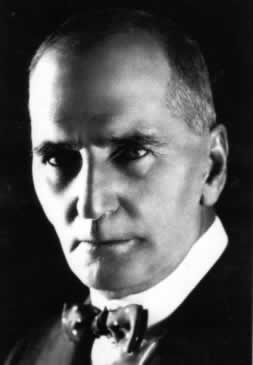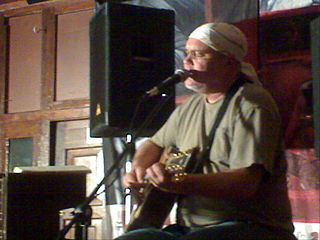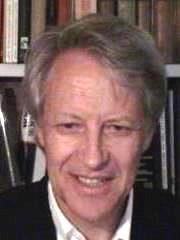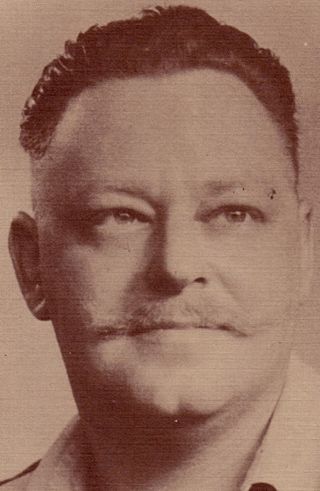Career and adult life
After graduation, Bosman accepted a teaching position in the Groot Marico district in an Afrikaans-language school. The area provided the backdrop for his best-known short stories, the Oom Schalk Lourens series (featuring an older character named Oom Schalk Lourens) and the Voorkamer sketches.
Over the June school holidays in 1926, Bosman visited his family in Johannesburg. During an argument, he shot and killed his stepbrother. Bosman was sentenced to death for this crime and was sent to death row at the Pretoria Central Prison. [2] His sentence was later reduced to ten years with hard labour. In 1930, Bosman was released on parole after serving half his sentence. His prison experiences formed the basis for his semi-autobiographical book, Cold Stone Jug. [3]
Bosman then started his own printing-press company and was part of a literary set in Johannesburg, associating with poets, journalists and writers, including Aegidius Jean Blignaut. He toured overseas for nine years, spending most of his time in London. The short stories that he wrote during this period formed the basis for another of his best-known books, Mafeking Road. At the start of the Second World War, he returned to South Africa and worked as a journalist. During this time he translated the Rubaiyat of Omar Khayyam into Afrikaans.
Bosman lamented the fact that Johannesburg neglected its heritage. In The Standard Theatre he complained that the city's residents:
"will pull down the Standard Theatre like they have pulled down all the old buildings, theatres, gin-palaces, dosshouses, temples, shops, arcades, cafes and joints that were intimately associated with the mining-camp days of Johannesburg. Because I know Johannesburg. And I am satisfied that there is no other city in the world that is so anxious to shake off the memories of its early origins."
Bosman's second wife was Ella Manson. The couple were renowned for their bohemian lifestyle and parties, which featured witty conversation and usually ended well after midnight. [4]
From 1948 to his death in 1951, Bosman was employed as proof editor at The Sunday Express. In addition, he was contracted to write a weekly Voorkamer story for The Forum magazine. [5]
His last wife was Helena Lake (née Stegmann). After a housewarming party in October 1951, Bosman experienced severe chest pains and was taken to Edenvale Hospital. On admission, he was asked for his birthplace. He replied, "Born Kuilsrivier – Died Edenvale Hospital." He was discharged and collapsed at home a few hours later. Bosman died as he was being rushed to hospital. He is buried in Westpark Cemetery in Westdene under a triangular headstone that reads "Die Skrywer, The Writer, Herman Charles Bosman, b 3.2.1905, d 14.10.1951."
Legacy
After his death, the rights to his works were auctioned. They were purchased by his last wife, Helena, and upon her death, the rights were passed to her son, who retains them. In 1960, however, Helena sold some of his documents and 123 of his water colours and pencil sketches to the Harry Ransom Center in Texas. [5]
Only three of his books were published during his lifetime: Mafeking Road published by Dassie, and Jacaranda in the Night and Cold Stone Jug published by APB. Mafeking Road has never been out of print since its publication in 1947. [5]
His biography was written several times by Valerie Rosenberg. Her first effort was called Sunflower to the Sun, [6] followed by Herman Charles Bosman, a Pictorial Biography, [7] and most recently by Herman Charles Bosman: Between the Lines. [8] The last of these contains much new research and deals in detail with aspects of Bosman's life and parentage that were previously considered taboo.
Because many of his stories were originally published in long-forgotten magazines and journals, there are a number of anthologies by different collators each containing a different selection. His original books have also been published many times by different publishers.
The Herman Charles Bosman Literary Society meets annually for readings, performances and discussions of his works. [5]

Breyten Breytenbach is a South African writer, poet, and painter who became internationally well-known as a dissident poet and vocal critic of South Africa under apartheid, and as a political prisoner of the National Party-led South African Government. Breytenbach is now informally considered by Afrikaans-speakers as their poet laureate and is one of the most important living poets in Afrikaans literature. He also holds French citizenship.
The following lists events that happened during 1899 in South Africa.

Egoli: Place of Gold was a bilingual South African soap opera which first aired on M-Net on 6 April 1992. South African television's first daily soap opera, on 3 December 1999 Egoli became the first South African television programme in any genre to reach 2,000 episodes. As of 3 August 2007, 4,000 episodes had aired. Egoli: Place of Gold aired its final episode on 31 March 2010, after 18 years of acting from South African and international actors.

Eugène Nielen Marais was a South African lawyer, naturalist, and important writer and poète maudit in the Second Language Movement of Afrikaans literature. Since his death by his own hand, Marais has been widely hailed as a literary and scientific genius and a cultural hero of the Afrikaner people.
Stephen Gray was a South African writer and critic.

Koos Kombuis is a South African musician, singer, songwriter and writer who became famous as part of a group of anti-establishment maverick Afrikaans musicians, who, under the collective name of Voëlvry, toured campuses across South Africa in the 1980s, to "liberate Afrikaans from the shackles of its past". Fellow musicians of this movement were Johannes Kerkorrel and Bernoldus Niemand.
Henry Green was British Resident of the Orange River Sovereignty, a civil servant and a diamond miner in Griqualand West.

Daniel Francois Roodt is a South African author, publisher, and commentator.

Many people of European heritage in South Africa are descended from Huguenots. Most of these originally settled in the Cape Colony, but were absorbed into the Afrikaner and Afrikaans-speaking population, because they had religious similarities to the Dutch colonists.
Marguerite Poland is a South African writer and author of eleven children's books.
John Christoffel Kannemeyer, better known as J. C. Kannemeyer was an authority on Afrikaans literature and a well-known biographer of Afrikaans writers, and published numerous books on the history of Afrikaans literature.

Peter Emil Julius Blum was an Afrikaans poet. As a child, he emigrated to the Union of South Africa with his family. From an early age Blum was already able to speak several languages, including German and Italian.
Barney Simon NOT to be confused with Jacaranda FM radio DJ Barney Simon, was a South African writer, playwright and director. He was born and died in Johannesburg, South Africa.

A Bekkersdal Marathon is anthology of short stories written by Herman Charles Bosman.
Abraham Hermanus de Vries is an Afrikaans short story writer, considered one of the most respected and beloved in Afrikaans language literature in the Sestigers.

Johannes Albertus Munnik Hertzog was a South African politician, Afrikaner nationalist, cabinet minister, and founding leader of the Herstigte Nasionale Party. He was the son of J. B. M. (Barry) Hertzog, a former Prime Minister of the Union of South Africa.
Petrus Bosman was a South African ballet dancer, teacher, choreographer, and répétiteur, active in England, France, and the United States.
Welma Odendaal is a South African writer writing in Afrikaans.

Harold (Harry) Kalmer was a South African novelist, essayist and playwright both in English and his home language Afrikaans.

Marie Linde was the pen name of Elizabeth Johanna Bosman, a South African novelist of Afrikaner descent. Initially home schooled, she studied modern languages at the University of Cape Town and was an accomplished linguist, able to speak Dutch, German, French and English. She published novels, short stories and plays, and created the first Afrikaans radio play broadcast. Published in 1925, her novel Onder bevoorregte mense was the first Afrikaans novel translated into English, being issued as Among Privileged People.











